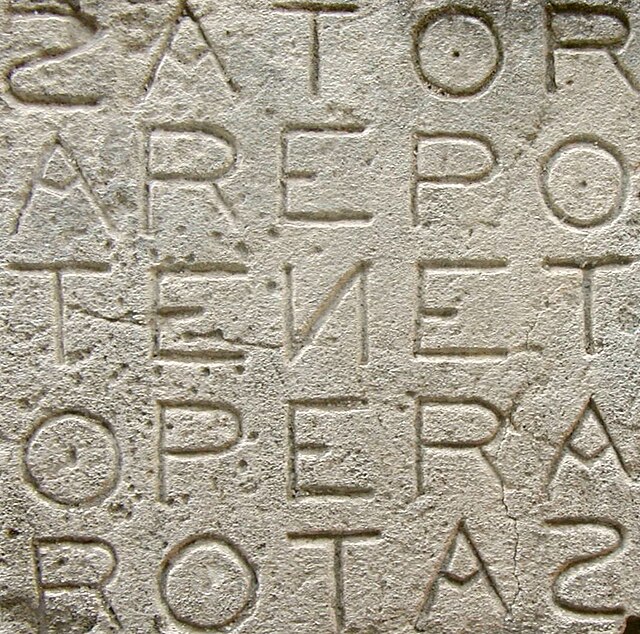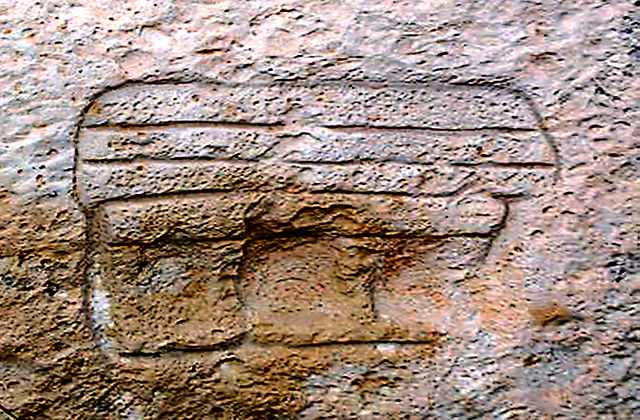A graffito, in an archaeological context, is a deliberate mark made by scratching or engraving on a large surface such as a wall. The marks may form an image or writing. The term is not usually used for the engraved decoration on small objects such as bones, which make up a large part of the art of the Upper Paleolithic, but might be used for the engraved images, usually of animals, that are commonly found in caves, though much less well known than the cave paintings of the same period; often the two are found in the same caves. In archaeology, the term may or may not include the more common modern sense of an "unauthorized" addition to a building or monument. Sgraffito, a decorative technique of partially scratching off a top layer of plaster or some other material to reveal a differently colored material beneath, is also sometimes known as "graffito".
Example of Demotic "Egyptian" script from a Rosetta Stone Replica, 198 BCE.
The "Sator Opera Tenet" square as seen in Oppède, France.
A louse graffito at a Rome gate
Malta temple graffito: Mnajdra
The Sator Square is a two-dimensional acrostic class of word square containing a five-word Latin palindrome. The earliest squares were found at Roman-era sites, all in ROTAS-form, with the earliest discovery at Pompeii. The earliest square with Christian-associated imagery dates from the sixth century. By the Middle Ages, Sator squares had been found across Europe, Asia Minor, and North Africa. In 2022, the Encyclopedia Britannica called it "the most familiar lettered square in the Western world".
A Sator Square (laid out in the SATOR-format), etched onto a wall in the medieval fortress town of Oppède-le-Vieux, France
Sator square (in ROTAS-form) on the eight-century facade of Abbey of St. Peter ad Oratorium in Italy
One of the four Sator squares (all in ROTAS-form) found at Dura-Europos, Syria, circa A.D 200.
The oldest known square. Found in 1936 on a column in the Palestra Grande [it] (CIL 8623), it is now kept in the Pompeii Museum.







![The oldest known square. Found in 1936 on a column in the Palestra Grande [it] (CIL 8623), it is now kept in the Pompeii Museum.](https://upload.wikimedia.org/wikipedia/commons/thumb/3/34/Sator_Square_Palestra_Pompeii_%28CIL_8623_%26_8622a-b%29.jpg/302px-Sator_Square_Palestra_Pompeii_%28CIL_8623_%26_8622a-b%29.jpg)